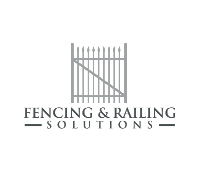The realization that it’s time to have work completed on a roof can be stressful. How do you know if the roof needs to simply be repaired or completely replaced? By learning more about parts of a roof and their purpose, you’ll be better prepared for discussion with contractors.
What Are The Parts Of A Metal Roof?
Here’s a complete breakdown of the parts that make up a metal roofing system.
Roof Frame
Almost everyone has seen the frame of a house, including the roof. There are five styles of frames for a roof: gable, hip, gambrel, mansard, and shed. The gable is the most popular style on the market.
Roof frames are built either with pre-manufactured trusses or by “stick framing”, using ceiling joists and rafters.
Ridge
The full name of the ridge is the ridge board. This area is the material resting at the peak creating the triangle. Essentially, it’s the highest peak on the roof. The ridge board is connected to the rafters and trusses.
Valley
The valley is the point where two slopes connect, forming an angle. The valley collects rainwater and channels it to the gutter or other water collection products.
Eaves
The roof’s edge, where the gutters connect to the roof.
Decking
Also known as sheathing, is the surface that is installed over the roof frame. There are two types of roof decking, plank decking made from 1’’ x 6’ or 1’’ x 8’ boards or sheet decking, using plywood or oriented strand board.
The decking closes the frame and provides an attachment point for the underlayment, tiles, shingles, or shake.
Fascia
The fascia is the board that lies along the side of the overhang. The gutters sit on top of the fascia.
Drip Edge
The drip edge is installed at the edge and works to keep water away from the fascia. This prevents water from running into the structure, waterproofing the interior of the home. Without a drip edge, water will run behind the fascia and onto the roof deck, causing these boards to rot.
Underlayment
The underlayment is a layer of material that protects the roof deck from extreme temperatures, rain, snow, and ice. There are three types of underlayment: felt, self-adhered, and synthetic.
Ice and water shield is a type of self-adhered underlayment. The name literally describes the purpose of this material – it’s another way to protect the decking from the elements. This shield should be installed on roof valleys, penetrations, and roofs with a pitch of 2/12, 3/12, or 4/12. High-temperature ice and water shield should be installed with a metal roof.
Flashing
The flashing is a thin metal that is applied to certain areas to direct water away from that area. Flashing is commonly installed on the:
- Chimney
- Vent Pipe
- Valley
- Skylight
- Dormer
Roof Vents
Vents help to release the air that is captured in the attic. There are two types of vents, passive and active. Active vents include power vents, turbine vents, solar-powered vents, and ridge vents with a baffle.
Passive vents include static vents, ridge vents without a baffle, and gable end vents.
Roofing Material
There are many types of roofing materials – asphalt, wood, concrete tiles, and metal are the most popular. When choosing a new roofing material, it’s important to review the pros and cons of each.
What Is The Best Type Of Roofing Material?
Our team believes that metal roofing is the best type of roofing material for the majority of roofing projects. Here’s why:
Metal Roofing Helps Homeowners Save On Energy Bills
Extra airspace is installed with a DECRA metal roof. This airspace acts as an extra insulator that keeps warm air circulating during the winter months. In the summer, warm air can escape through the roof vents. This design can help homeowners save up to 40% on energy bills!
A DECRA Roof Provides Superior Protection
DECRA roofs have a Class A fire rating, can withstand hail up to 2.5 inches in diameter, and stand strong against winds of up to 120 mph! This protection is invaluable in areas with extreme weather such as hurricanes.
Metal Roofs Can Last For Decades
Every roofing material has a lifespan. Some roofs will only last around 10 years, while many asphalt shingle roofs can remain intact for around 30 years. A metal roof beats all of the competition, lasting for between 40-70 years!
Over time, metal roofs help save money by lowering energy bills, lasting longer before requiring replacement, and handling the elements without needing replacement or repairs. In some states, the benefits provided by a metal roof can even qualify a homeowner for an insurance discount!
Order DECRA Metal Roofing Today
Contact our team today with your roofing needs or order online today!





Leave A Comment